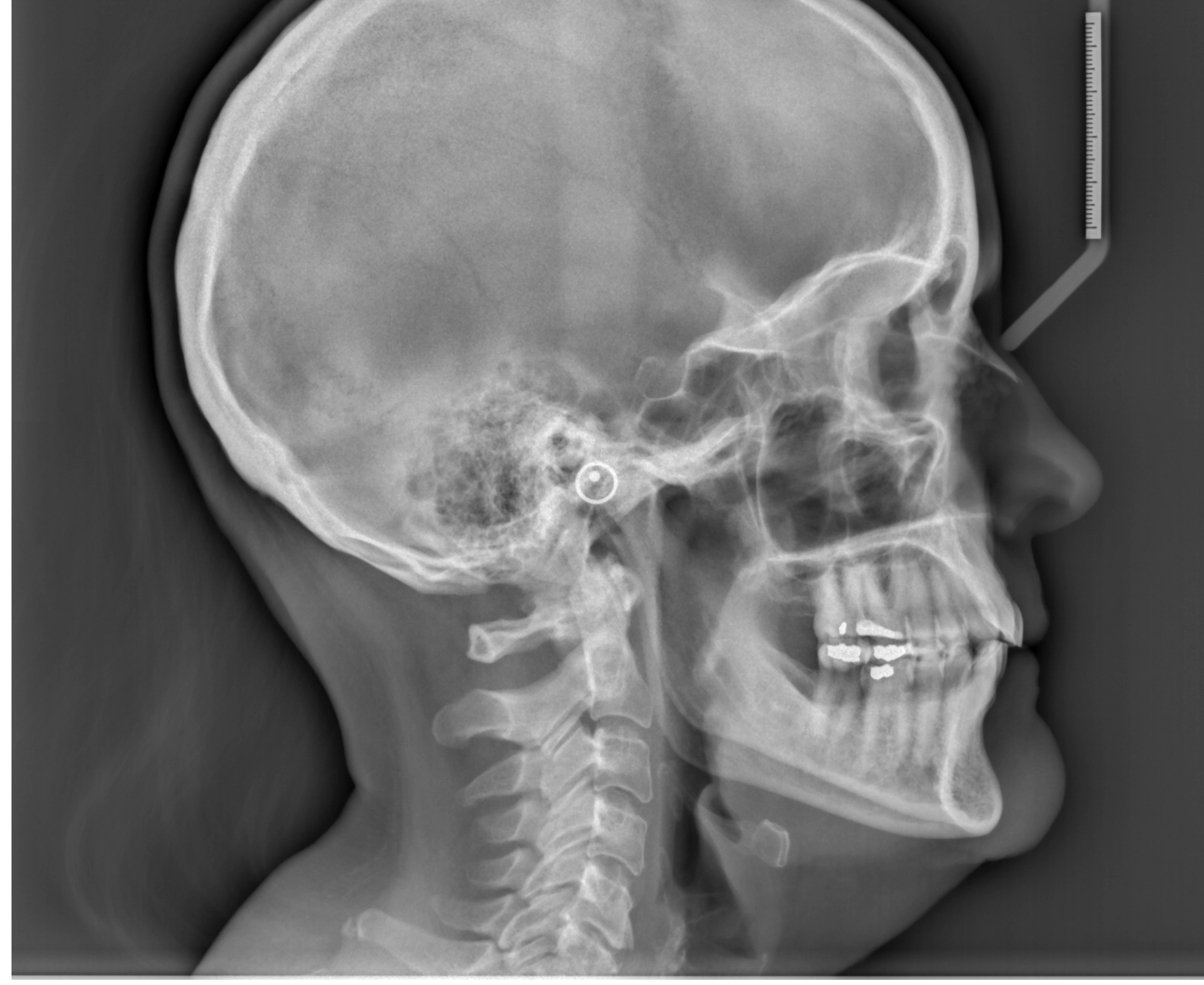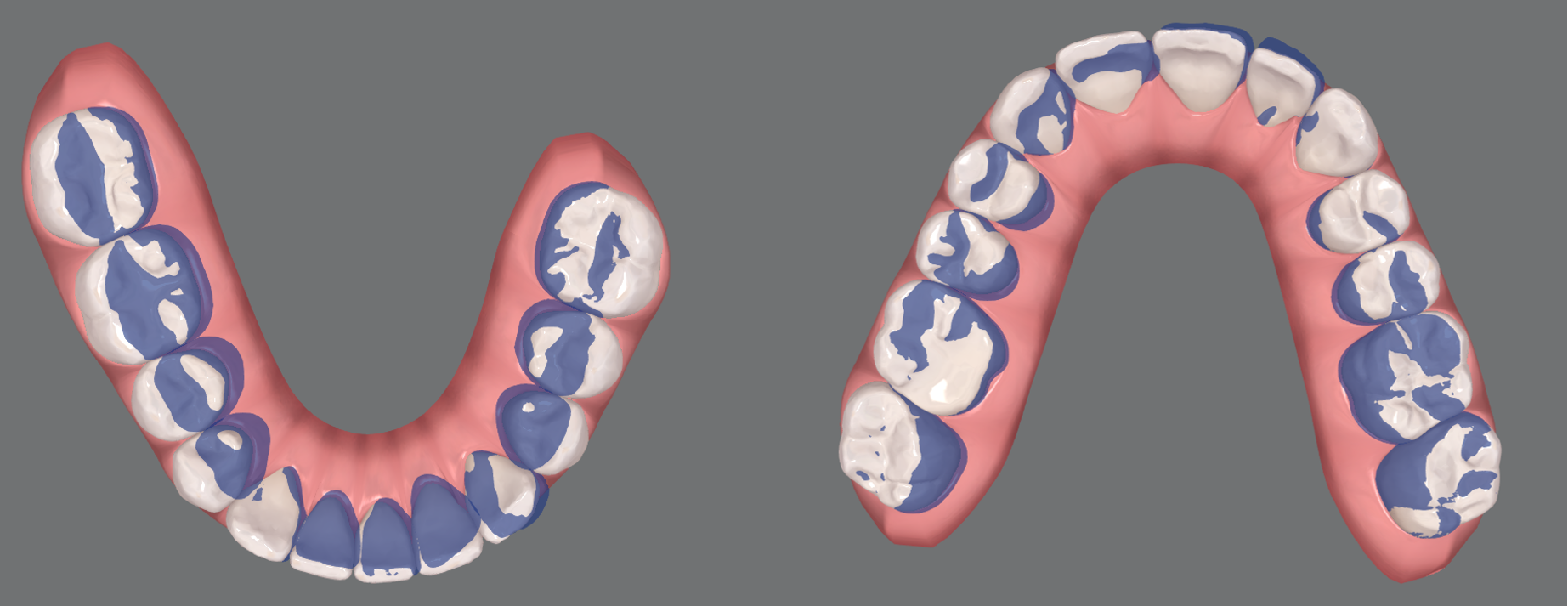
5 minute read
Clear Aligner Therapy and Symptoms of TMDs
The following is a synopsis of the article “Clear aligner therapy and symptoms of temporomandibular disorders: a case report,” which appears in the November/December issue of General Dentistry. Read the full article here.
Temporomandibular disorders (TMDs) are a group of multifactorial conditions that commonly manifest as pain or dysfunction of the masticatory muscles, temporomandibular joints (TMJs), and associated structures. A cause-effect relationship is too simple to explain the etiology of TMD-related pain, but possible interactions between existing cofactors should not be ignored.
Clear aligner therapy (CAT) is popular because clear aligners make it easy to maintain good oral hygiene, are convenient, and are minimally visible to observers.(1) It has been reported that there are no significant changes in occlusion or muscle activity during the short-term retention period.(2) This report describes a case in which the use of CAT exacerbated TMD symptoms. The CAT protocol was altered, allowing the patient to continue orthodontic treatment and relieving symptoms of orofacial pain. Dentists should be aware that CAT may exacerbate factors in some patients, leading to TMD symptoms, and this possibility should be explained to the patient at the time of consent.
Case Report
A 56-year-old woman whose chief concern was maxillary and mandibular crowding also had missing teeth, end-on molar occlusion, excess overjet, and generalized tooth wear. The patient reported a history of clenching but no prior history of TMD symptoms. Although a comprehensive treatment plan was offered, the patient chose CAT with a limited goal of improved esthetics. After a few weeks of wearing the aligner trays full time, the patient developed acute pain in the masseter and preauricular areas. When the symptoms did not resolve with routine home care methods such as mandibular relaxation exercises, a softer diet, and anti-inflammatory pain medication, basic behavioral education was introduced, and the course of orthodontic treatment was altered. The patient was educated about the relationship between tooth clenching and emotional stress and instructed to discontinue wearing the aligners for 1 week while she learned to reduce the tension in her jaw muscles. The patient then resumed CAT with only nighttime use, and a new series of aligners was designed to compensate for the lack of daytime wear. The patient followed the new CAT protocol without experiencing TMD symptoms and was satisfied with the outcome.

Discussion
This case report demonstrates that acute muscle TMD pain can occur in patients undergoing CAT. A common factor that initiates muscle symptoms is increased activity of the masticatory muscle, which in some patients may be caused by an acute change in the occlusal condition, such as the placement of a high crown; the muscles can experience protective co-contraction, resulting in an increase in tonicity, which can lead to pain. Clear aligners are not initially designed to offer a stable occlusal condition, and this sudden change can initiate a similar protective response, leading to muscle pain. Once pain has begun, it can induce further protective co-contraction, leading to a self-perpetuating pain cycle.(3)
Le Bell et al added a temporary acute occlusal interference in two groups of patients—those who had never experienced TMDs and those who had a history of TMDs but were asymptomatic at the time.(4) Both groups experienced mild TMD symptoms during the experimental period. Once the interference was eliminated, pain was quickly resolved in the patients who had never experienced TMDs. However, those with a history of TMDs had a far longer period of recovery, suggesting that some individuals may be less adaptable to changes in their occlusal condition.
Schupp et al stated that clear aligners are comfortable, invisible, and a powerful instrument for treating craniomandibular disorders (including TMDs).(5) However, a systematic review reported inconclusive evidence regarding the superiority of clear aligners compared with conventional orthodontics for resolving TMJ symptoms.(6) In the present case, CAT might have been a cofactor in lowering the threshold for orofacial symptoms to arise in the patient. Her TMD symptoms were addressed with a customized treatment designed to reduce pain without stopping the orthodontic tooth movement. The aligners may have also served as temporary nightguards that alleviated nighttime clenching while they advanced the orthodontic treatment goals. For other patients, the necessary protocol adjustments may differ based on their specific symptoms and contributing factors.
Summary
Severe, acute orofacial pain may arise even during orthodontic treatment that has limited goals. In this context, CAT differs from fixed appliance therapy in having occlusal coverage that may initiate unpredictable responses in patients who adapt poorly to occlusal changes. Patients should be informed about the potential risks and benefits of CAT at the time of consent.
References
1. Galluccio G. Is the use of clear aligners a real critical change in oral health prevention and treatment. Clin Ter. 2021;172(2):113-115. doi:10.7417/CT.2021.2295
2. Kim KY, Choi JY, Oh SH, et al. Computerized assessment of occlusion and muscle activity during use of a multilayer clear retainer: a preliminary study. Sensors (Basel). 2021;21(2):541. doi:10.3390/s21020541
3. Okeson JP. Management of Temporomandibular Disorders and Occlusion. 8th ed. Elsevier; 2020.
4. Le Bell Y, Niemi PM, Jämsä T, Kylmälä M, Alanen P. Subjective reactions to intervention with artificial interferences in subjects with and without a history of temporomandibular disorders. Acta Odontol Scand. 2006;64(1):59-63. doi:10.1080/00016350500419867
5. Schupp W, Haubrich J, Neumann I. Invisalign treatment of patients with craniomandibular disorders. Int Orthod. 2010;8(3):253-267. doi:10.1016/j.ortho.2010.07.010
6. Lu C. Evaluating clear aligners and conventional braces in treating TMJ and speech impediment. J Stud Res. 2022;11(4). doi:10.47611/jsrhs.v11i4.3688

